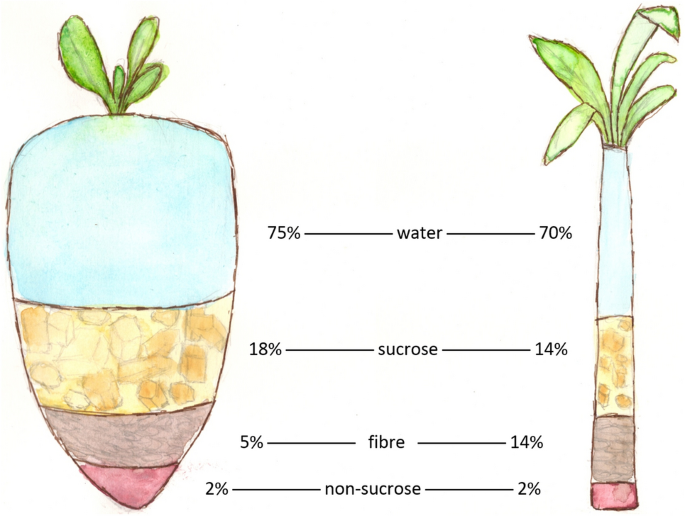People researching beet sugar vs cane sugar often want to know which blends well in beverages.
People researching beet sugar vs cane sugar often want to know which blends well in beverages.
Blog Article
Discover the Uses and Perks of Beet Sugar Vs Cane Sugar in Your Daily Diet
Discovering the unique top qualities of beet and cane sugar discloses greater than just their sweetening abilities; it highlights their one-of-a-kind influence on health and cooking arts. Beet sugar, understood for its refined taste, is often preferred in delicate desserts, whereas cane sugar, with its hint of molasses, adds richness to durable meals. Each type holds its own dietary profile and glycemic ramifications, welcoming a deeper understanding of their functions in a well balanced diet regimen and lasting consumption practices.
Origin and Production Procedures of Beet and Cane Sugar

The distinctive climates and dirt kinds required for expanding sugar beets and sugarcane add to differences in their growing techniques and geographical distribution, influencing the business economics and sustainability of their production. beet sugar vs cane sugar.
Nutritional Comparison Between Beet Sugar and Cane Sugar
Regardless of originating from different plants, beet sugar and cane sugar are nutritionally extremely similar, both largely containing sucrose. Each provides regarding 4 calories per gram, equating to roughly 16 calories per teaspoon. Structurally, both sugars are composed of approximately 99.95% sucrose, with marginal amounts of various other compounds like wetness and trace minerals, which do not substantially change their dietary accounts.

Inevitably, when selecting between beet sugar and cane sugar based on dietary my blog material alone, both deal identical advantages and downsides as they are essentially kinds of the same particle-- sucrose, giving quick power without other nutrients.
Influence On Health: Glycemic Index and Caloric Content
Discovering better right into the results of beet sugar and cane sugar on wellness, it is vital to consider their glycemic index and caloric web content. The glycemic index (GI) of both beet and cane sugar is around 65, classifying them as high-GI foods, which can trigger fast spikes in blood sugar degrees.
Each sort of sugar includes around 4 calories per gram, making their calorie content equivalent. For those keeping an eye on calorie consumption, specifically Our site when handling weight or metabolic health conditions, comprehending this equivalence is vital (beet sugar vs cane sugar). Nevertheless, excessive consumption of any type of high-calorie, high-GI food can add to health and wellness concerns such as excessive weight, cardiovascular disease, and insulin resistance.
Environmental and Economic Considerations of Sugar Manufacturing
Beyond health and wellness influences, the manufacturing of beet and cane sugar likewise elevates significant ecological and economic concerns. Sugar beet cultivation has a tendency to need cooler climates and has a reduced geographical footprint contrasted to sugar cane, which grows in exotic areas.
Furthermore, using pesticides and plant foods in both beet and cane sugar cultivation can result in soil deterioration and air pollution, further influencing biodiversity and neighborhood water bodies (beet sugar vs cane sugar). The option between growing sugar beet or cane usually hinges on regional environmental problems and economic aspects, making the sustainability of sugar manufacturing an intricate problem
Culinary Applications and Taste Distinctions
While the environmental and financial elements of sugar production are without a doubt considerable, the choice between beet and cane sugar Home Page additionally affects culinary applications and flavor profiles. Beet sugar, acquired from the sugar beet plant, is recognized for its incredibly neutral preference.
Walking cane sugar, removed from sugarcane, usually keeps molasses traces, which impart an unique splendor and depth. The slight variation in moisture material between beet and cane sugar can influence the texture and consistency of recipes, making cane sugar a recommended selection for details dishes that profit from its distinct homes.

Final Thought
To conclude, both beet and cane sugar have unique beginnings and production procedures, using similar nutritional profiles with slight distinctions in salt material and flavor. While their effect on wellness, specifically relating to glycemic index and calories, is similar, the option in between them often comes down to environmental, economic elements, and specific cooking demands. Recognizing these facets can direct customers in making informed decisions that align with their health objectives and flavor preferences.
Report this page